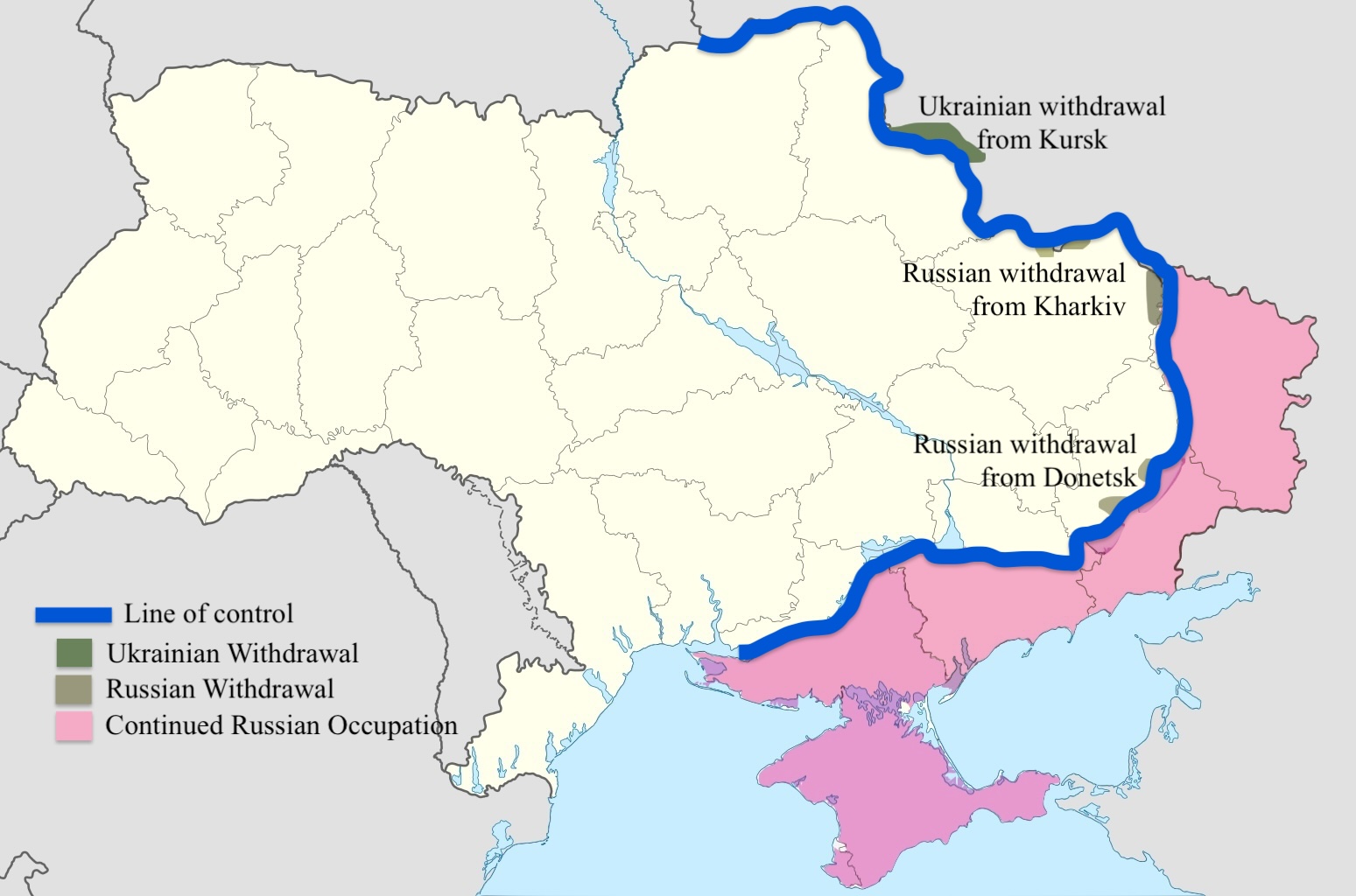|
Today's Opinions, Tomorrow's Reality
Deal With the Devil By David G. Young Washington, DC, August 20, 2024 -- Making peace between Russia and Ukraine is impossible. Ending the fighting may not be. As Ukrainian forces continue to push their invasion deeper into Russia's Kursk province, Western backers respond with a strange mix of joy and befuddlement. Why does Ukraine commit troops to invading Russia while failing to hold back Russian forces pushing forward in Ukraine's own Donetsk province? If you believe the words of one of President Zelensky's top advisors, the conquered land will be used as a bargaining chip in future negotiations.1 But how can there be negotiations between Ukraine and Russia given their irreconcilable differences? Ukraine demands that Russia withdraw from all occupied territories, including Crimea and parts of the Donbas occupied since 2014. Given that Russia has made huge territorial gains in the past 2 1/2 years, there is currently zero chance of Russia agreeing to that. Russia demands that Ukraine accept Russia's the annexation of its southeastern quarter, despite the fact that Russia doesn't control large parts of the annexed areas and doesn't even control the capitals of two annexed provinces. Further, Russia demands that Ukraine give up the chance to ever join NATO. Ukraine knows this means being vulnerable to a new round of Russian land grabs in a few years, just like what happened between the invasion/annexation of 2014 and the one in 2022. But like it or not, Ukraine may have no choice but to make a deal with the devil. The looming risk of an electoral victory by Donald Trump just 11 weeks means it must be prepared for the worst. Trump said last year that he would end the war in Ukraine in 24 hours2 and reportedly reacted favorably in June to advisors' plans to present Ukraine an ultimatum to enter negotiations or lose further American military aid.3
Even if Trump loses the election, Ukraine may be forced into negotiations by other future circumstances. While a negotiated peace may beyond reach, some kind of long-term cease fire may be possible. Territory occupied in Ukraine's Kursk invasion is helpful both to strengthening Ukraine's general hand and more specifically for trading territory along the current front line. A viable cease fire might include adjusted current front lines with Ukraine withdrawing from Kursk in return for an equivalent area currently occupied by Russia. A similar exchange was critical to negotiating the 1995 Dayton Peace Accords that ended the civil war in Bosnia. If Ukraine can hold much of its rapid gains in Kursk until negotiations, this could prove a fruitful strategy vs. trying to slow down enormous Russian human wave attacks in Donetsk. But even if it can favorably negotiate some adjustments to the front lines, there is no near-term chance of Ukraine accepting those lines as a permanent border and similarly no near-term chance of Russia agreeing to the same. This could be at most a de-facto line of control similar to the border between North Korea and South Korea or that between India and Pakistan in Kashmir. This would create a frozen conflict -- something that would seem to play into the hands of Russia, giving it time to rest and recharge its much larger population and military until it can attack again. That's where things get tricky. How can Ukraine be given security guarantees without NATO membership that Russia would never accept? While it is possible to grant Ukraine security guarantees short of NATO membership, they will need to be iron-clad, especially since Ukraine was once before given security guarantees by both Russia and the United States in return for it giving up the nuclear weapons on its territory after the fall of the Soviet Union. Ukraine did give up those weapons, only to be invaded in 2014 and again in 2022 while one of the two security guarantors stood by doing nothing, and the other actively invaded. Don't expect it to agree to be fooled twice. Yet it may be possible to get Ukraine and Russia to agree to some mix of Western peacekeeping troops to patrol the negotiated line of control under a non-NATO command structure and Ukraine to forgo formal membership in NATO for a period of 20 or so years pending a final peace treaty. This would provide Ukraine a tripwire that would force Western forces to be involved should Russia invade again. It would not require Ukraine to give up its NATO dream and would not require Russia to accept its worst NATO fears. Freezing the conflict means making a deal with the devil. But Ukraine may have no choice, and doing so has the advantage of saving lives in the near-term while kicking the seemingly intractable dispute a generation down the road when cooler heads may prevail. Does a Western-oriented Ukraine really want to be joined to the whole of those Russophile territories in its south and east? Does a future (and presumably post-Putin) Russia really want to send its children to die to subjugate its ethnic brothers to its west? Notes: 1. New York Times, What to Know About Ukraine’s Cross-Border Assault Into Russia, August 18, 2024 2. CNN, Trump Won’t Commit to Backing Ukraine in War With Russia, May 11, 2023 3. Reuters, Exclusive: Trump Handed Plan to Halt US Military Aid to Kyiv Unless it Talks Peace With Moscow, June 25, 2024 |


